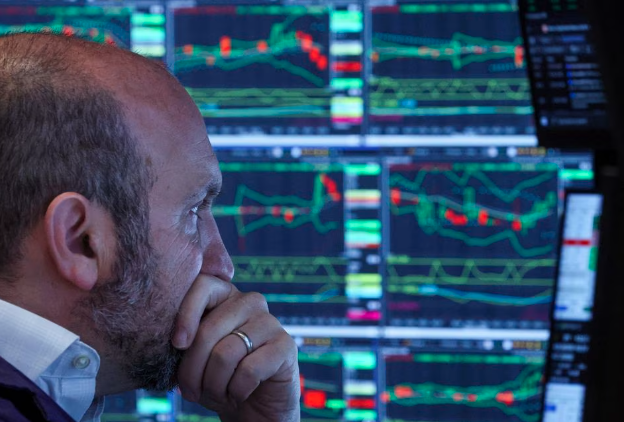A look at the day ahead in U.S. and global markets from Mike Dolan
World markets are finally bracing for accidents as the U.S. debt ceiling impasse threatens to empty U.S. government coffers as soon as next week, but a return of 6% policy interest rates to the risk radar is just as jarring.
Fear of a technical default on Treasury bills without a bipartisan agreement in Washington to lift the debt limit by June 1 is causing ever more ructions at the short end of the debt market.
Tuesday’s $35 billion auction of 21-day cash management bills that cover early June required a whopping 6.2% high yield – more than a percentage point above Federal Reserve policy rates. One-month bill yields are hovering just under 5.9%.
And as the political brinkmanship gets intense, there was no sign of a substantive breakthrough in talks late Tuesday.
Relatively unscathed by the issue until this week, Wall St stock indices ,fell back more than 1% on Tuesday and futures remained in the red ahead of Wednesday’s open. Asian and European bourses fell by similar amounts.
The debt limit angst comes as interest rate markets more generally absorb surprisingly buoyant soundings on global business activity and some spiky inflation readouts to boot.
So much so that talk of further Federal Reserve tightening is back. Fed hawks are in full voice and senior bankers, such as JPMorgan boss Jamie Dimon, this week mulled risks that rates could get above 6% before peaking, a level some had feared they might reach before the banking stress hit in March.
“Five percent’s not high enough for Fed Funds – I’ve been advising this to clients, and banks, you should be prepared for six, seven,” Dimon said on Monday.
Minutes of the Fed’s most recent policy meeting are due out later and will be scoured for clues about where the centre of gravity among policymaking lies.
Rates futures are not in the 6% range yet by any stretch, but they put a one-in-three chance of another quarter-point Fed rate hike next month and have priced out the likelihood of multiple rate cuts by year-end.
Central banks elsewhere have even bigger problems.
Pressure on the Bank of England to tighten further mounted on Wednesday after news that Britain’s stubbornly high inflation rate fell by less than expected last month and a closely watched measure of core price rises surged to a 31-year high. Money markets rushed to price a rise in BoE policy rates rising another 75 basis points to 5.25% by September.
New Zealand’s central bank appeared to get more relief despite another quarter-point hike on Wednesday and signalled it may have finished tightening.
Elsewhere China’s stocks continued to wobble amid underwhelming economic recovery soundings and intensifying geopolitical concerns since the weekend G7 summit. The offshore yuan hit its lowest level of the year against a resurgent dollar.
In corporate news, the artificial intelligence frenzy will be tested with results from chipmaker NVIDIA – the fifth biggest U.S. stock – later on Wednesday.





